My old work laptop, a HP, was a complete piece of crap. When they sent me my new laptop, as a bit of a Dell fanboy, I was excited to see that it was a Dell. However, I quickly began to question some of the design choices. After using it for a couple of weeks, I have solidly decided that the Dell Latitude 7450 Laptop…Thing is badly designed.
Table of Contents
Introduction
Sorry, but this post is going to be a bit of a rant.
As mentioned, as a bit of a Dell fanboy, I was initially excited to get my new work laptop, but it’s kind of a piece of crap.
The piece of crap in question is the Dell Latitude 7450 “2 in 1”.
“2 in 1?”, you ask?
Yes, unfortunately. It’s a laptop that folds in to a tablet. This is an old concept with no real use case, but companies seem to think that business users want a tablet for some reason. Hint: WE DO NOT.
And also, unfortunately, the form factor isn’t even my main gripe. My MAIN gripe is the keyboard!
Form Factor
When you are searching for a LAPTOP, you would typically look at the manufacturer’s website to view the image of the device as well as the specifications.
For example, a typical laptop “clam shell” would look like this HP Elitebook:
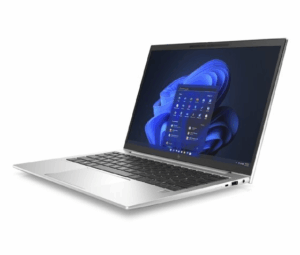
However, Dell doesn’t want to embrace the clam shell form factor because the 7450 is supposed to be NEW and EDGY! The closest thing to a clam shell photo you will see is this:

BUT, you will also see these:


THERE IS NO USE CASE FOR A LAPTOP THAT FOLDS IN TO A TABLET.
Lets look at these simple examples.
- The reverse-fold “transforms” the laptop in to a tablet. However, in this configuration, the keyboard is pointed downward, making the device awkward to grasp or carry, and with the downward-facing keyboard, it will suck up crumbs and dirt from any surface on which it is placed.
- The “v-fold” is just stupid, and is equivalent to the clam shell from a viewing perspective, so the v-fold adds nothing. HOWEVER, the camera is upside-down. So…. it’s useless for a video conference unless it corrects for that, which is ostensibly being portrayed.
The other major down side to having a laptop that transforms in to a tablet is the incredibly small screen. If I increase the display size to 125%, I lose too much screen real-estate. If I run with the default 100% display size, the text is uncomfortable to read. As a business laptop, the display really should be at least a couple of inches larger.
Keyboard
Let’s talk about the keyboard. The hideous keyboard, that was obviously designed by someone who has never actually USED a keyboard.
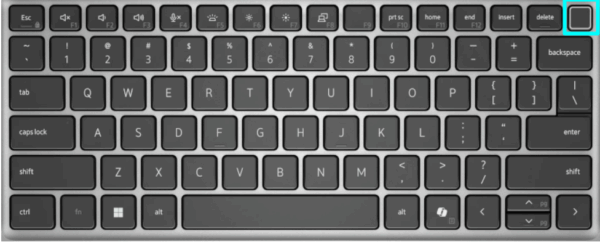
The first problem I noticed was that the power button (upper-right), which doubles as the fingerprint reader, is uncomfortably close to the delete key. This is just terrible placement, and I have already confirmed that an accidental click, if forceful enough, will in fact shut the computer down.
The second major problem is the function keys.
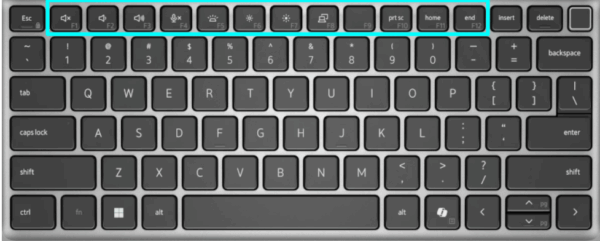
As with most laptop keyboards, the function keys have a primary and secondary function. By default, the primary functions are related to sound and video – things like mute, sound volume, screen brightness, and switching to an external display.
To access the actual function key, you have to press the “fn” key while pressing the function key. For example, “F2” turns the volume down, but “fn+F2” is “the real” F2.
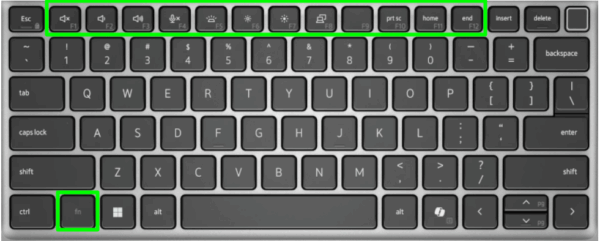
Also, as with most laptops, there is a “function lock”, which on this laptop is accessed with “fn+Esc”.
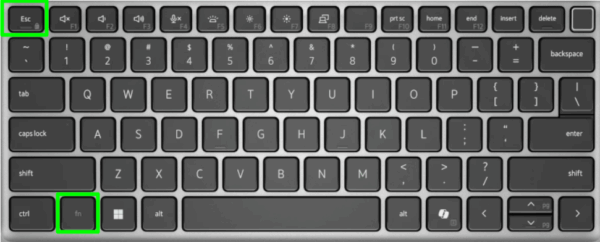
“Function lock” inverts the “fn” key behavior, so that the default (un-shifted) keypress invokes “the real” function key, and its shifted (“fn+”) function invokes the sound/video functions.
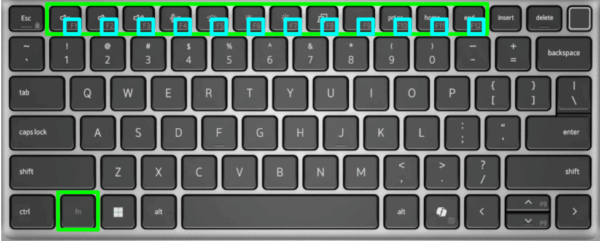
Anyone who uses the laptop for coding or documentation, or just types a lot, would consider this “the normal” layout, because function keys are used for all sorts of useful things:
| Key | Shortcut |
|---|---|
| F1 | Help |
| F2 | Edit text. For example, edit a shape’s text in Powerpoint, or a cell’s text in Excel. In file explorer, F2 allows you to edit a file or folder name. |
| F3 | Search |
| Alt+F4 | Close current window |
| Ctrl+F4 | Close current document |
| F5 | Refresh (for example, in a browser, or e-mail) |
| F6 and Shift+F6 | Navigate to different parts of the active window |
| F7 | Spell Check |
| F10 | Access the menu in most applications |
| F11 | Toggle full-screen |
| F12 | Enter debug mode in browsers. Open “Save As” dialog in Word and Excel |
I learned to use productivity software in the DOS days before mice were completely common. Programs such as WordStar and SuperCalc pretty much required the use of hotkeys for navigation. Later, WordPerfect and Lotus (also before Windows) offered mouse support, but someone once taught me that your productivity drops when you have to switch between mouse and keyboard, so I have always been a keyboard guy, even after Windows came in to common use.
And I’m not one of those people who mindlessly insists that “the old way is better”. However, I still assert that it’s faster and more efficient to keep your hands on the keyboard rather than switch back and forth between mouse and keyboard.
Therefore, to me, having the function key mode default to sound and video because some moron doesn’t know how to use the projector is very frustrating.
But the salvation is “function lock”, right? RIGHT? right? …..right?
NO IT ISN’T. Not on this piece of crap.
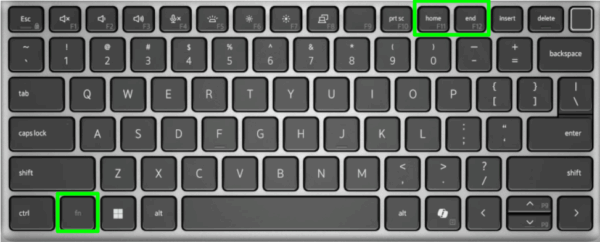
See….here’s the problem. The special people who designed this keyboard mapped HOME and END on top of F11 and F12. So…if you enable function lock in order to get your function keys back, you lose HOME and END, arguably two of the most useful cursor control keys on the keyboard.
Weeks later, I accidentally hit some random key combination and “SCROLL LOCK” was stuck on. If you’re not familiar with SCROLL LOCK, it only typically affects Excel. The affect it has within excel is as follows:
- Normal function: Arrow keys move the cell selection
- Scroll lock: Arrow keys pan the entire screen
So if you suddenly find yourself with SCROLL LOCK enabled and there is no scroll lock key, Excel is now useless. Fortunately, google came to my aid.
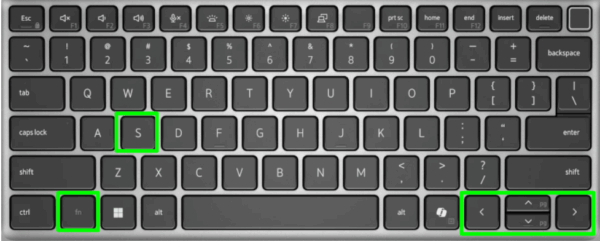
You see, there are UNDOCUMENTED key combinations. As it turns out, I must have hit “fn+S”, which enables SCROLL LOCK, and pressing “fn+S” again disabled it. And there are others, but that’s beside the point.
If you notice, the up and down arrows are have sub-labels, indicating “fn+up”=PgUp and “fn+dn”=PgDn. Page UP and Page Down. On a whim I tried “fn+left and “fn+right” and guess what???? HOME AND END respectively.
It’s a good feature, but they DIDN’T LABEL THE DAMN KEYBOARD.
It’s still awkward to use, but at least it’s slightly less awkward than “fn+F11” and “fn+F12”.
But clearly, ZERO THOUGHT was given to how this product would ACTUALLY be used.
And, this isn’t the worst offender on my list of gripes about the keyboard. My biggest gripe is THIS key, right here.
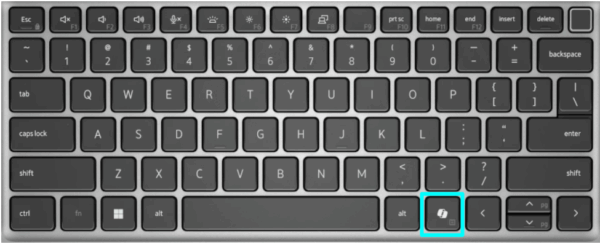
MEET the COPILOT KEY!
On a normal keyboard, this would be the menu key… not often used, but a convenient way to activate the context menu for a given object, which is the same as right-clicking.
And, in fact, you can see that “fn+copilot” = Menu, so you CAN in fact access the menu.
But…what does COPILOT do?
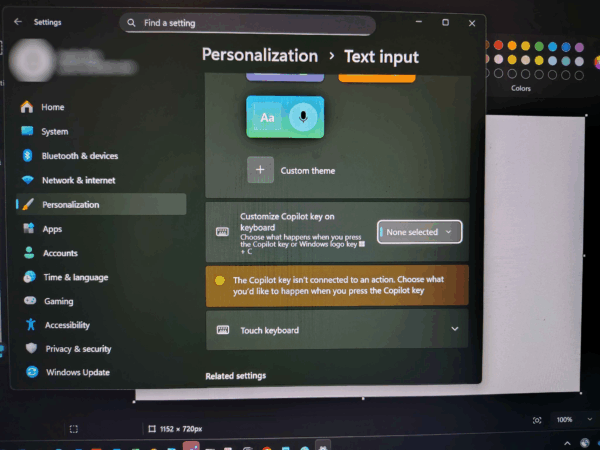
On my machine, I don’t have a function set, so …. it brings up this screen. There are three options….NONE, which brings up the screen above.
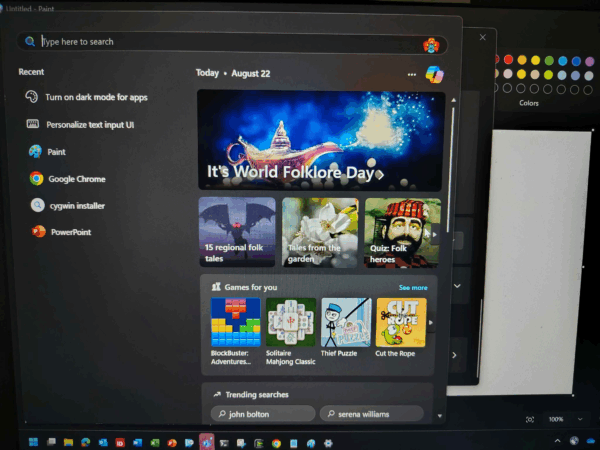
“Search” which brings up the Copilot screen, and…
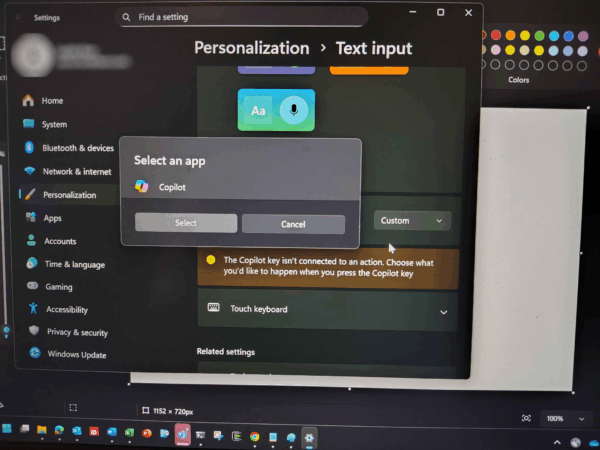
Custom, which lets you set a custom option. Oh, that’s cool….EXCEPT THE ONLY OPTION IT LETS YOU SET IS COPILOT.
So I have a dedicated, completely useless key on my keyboard because Dell thinks AI is important. Even better, Microsoft coerced Dell to dedicate a key on my keyboard to something useless.
And, what if I press the all-hallowed Windows key?

I get basically the same thing as if I hit the Copilot key.
So Microsoft has created a mandatory, useless key that wastes space on my keyboard, and Dell has seen to it that my home and end keys (which I use continuously) are harder to use.
Screen
My final gripe is the screen (or lack thereof).
I NEED SCREEN REAL ESTATE. I need a big screen with lots of pixels so that I can view multiple stuffs simultaneously.
However, the anemic 14.5″ display panel on this piece of junk is WAY undersized for my needs. Why is it undersized? Because Dell thought I wanted a tablet, and tablets have smaller screens than laptops.
Conclusion
In conclusion, the Dell Latitude 7450 is a badly-designed piece of crap.
Thank you for reading my rant.